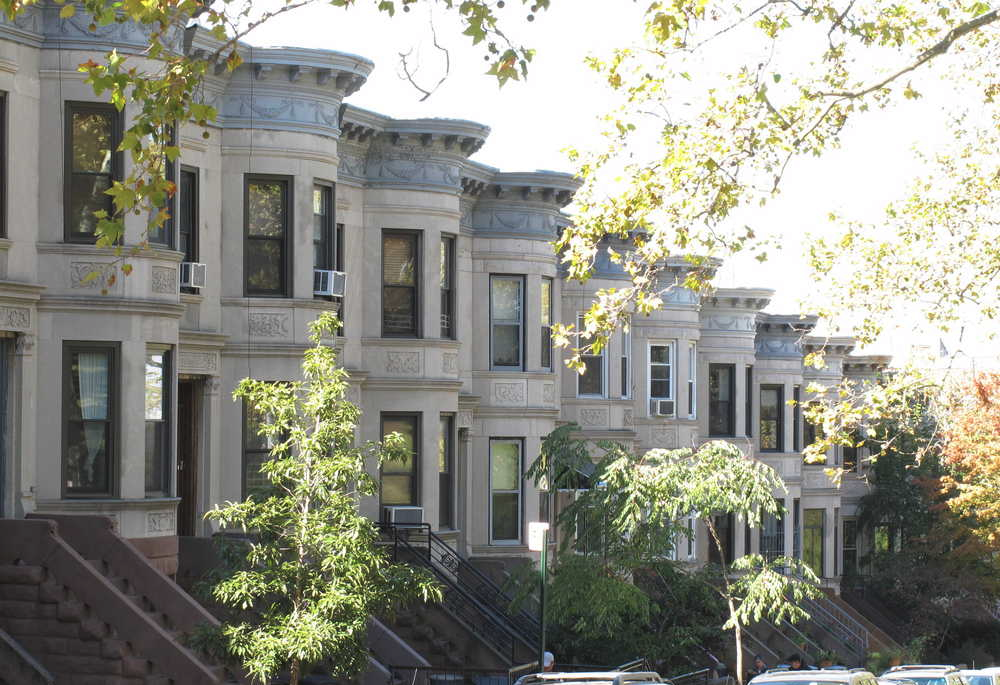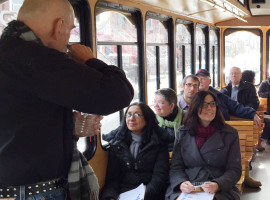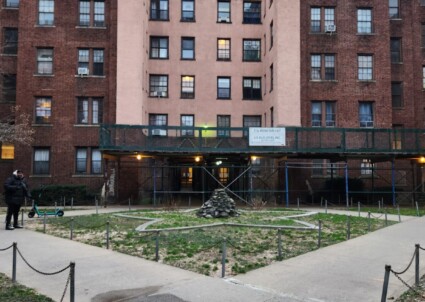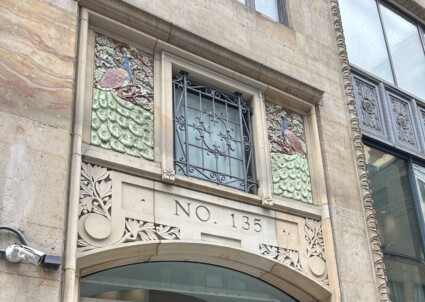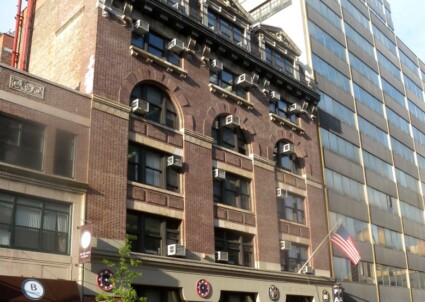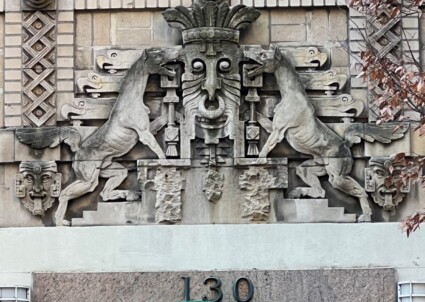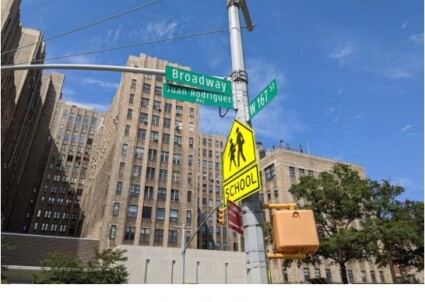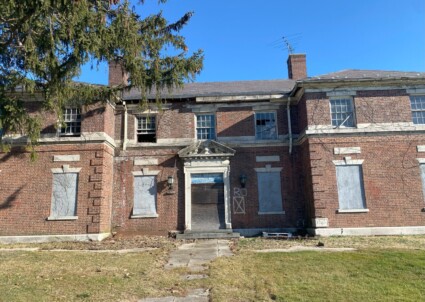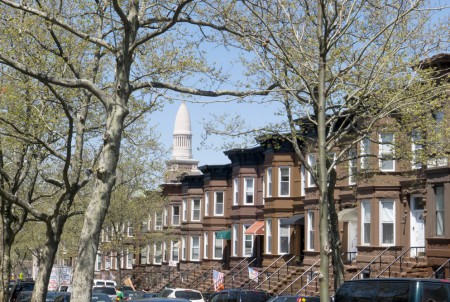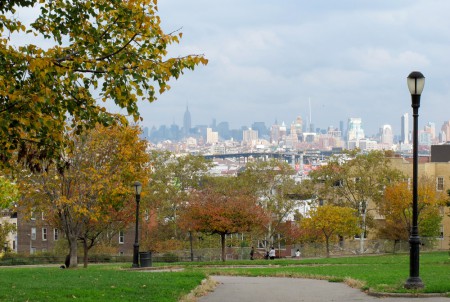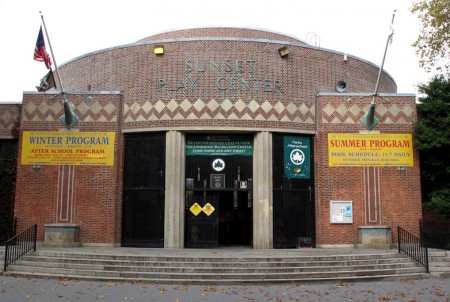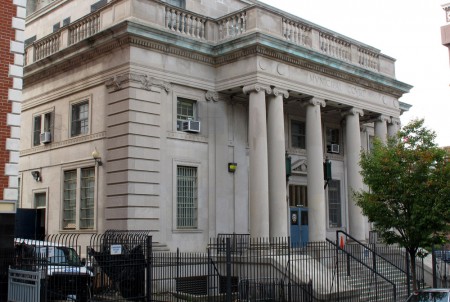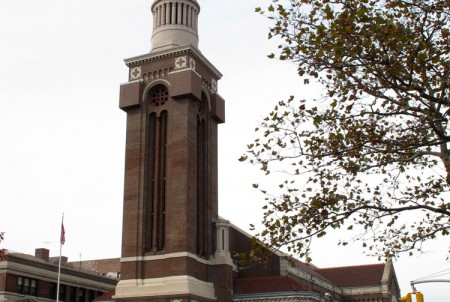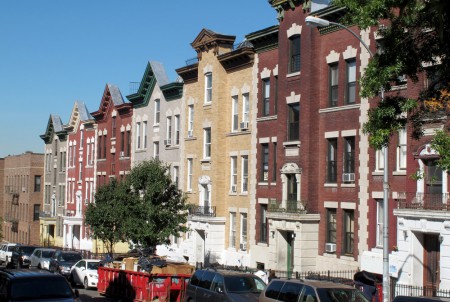Sunset Park, Brooklyn
Originally part of Bay Ridge, the area got its own name with the creation of Sunset Park in 1891. Today, the neighborhood extends from Prospect Expressway to 65th Street and Eighth Avenue to the waterfront. Sunset Park’s first major development began after the Civil War, when manufacturing enterprises were established on its waterfront. Beginning in the 1880s, the inland area developed as a residential neighborhood for middle- and working-class families, including many who worked on the waterfront. A major stimulant to its growth was the establishment in 1889 of a ferry service to and from Manhattan at Second Avenue and 39th Street. Sunset Park’s first waves of immigrants were Irish, German and Scandinavian, but by the late 19th century, immigrants from Italy, Greece and Poland also arrived. To accommodate them, large swaths of rowhouses were built. Puerto Rican and other Latin American populations began settling here in the 1940s, and large numbers of Asian immigrants arrived in the 1980s, establishing Brooklyn’s first and New York City’s third “Chinatown.”
Sunset Park’s standout building type is the masonry rowhouse. In fact, Sunset Park contains one of the earliest and most extensive concentrations of two-family masonry rowhouses in the city. Mostly built between 1885 and 1912, these stunning blocks are accented by commercial thoroughfares and institutional and religious buildings mostly completed by the early 1930s. The area also has many multiple-family dwellings and tenements, with some early examples of non-profit cooperative apartment buildings. The neighborhood’s most pronounced architectural styles are neo-Grec, Romanesque Revival and Renaissance Revival, all popular at the end of the 19th century. While these rows are attributed to specific architects, it is believed that at this time, architects mostly worked on interior layouts, as exterior designs were repeated in modest neighborhoods like this one. In 1988, an area encompassing 3,237 buildings was listed on the National Register of Historic Places. All of the sites in this brochure are part of the district except numbers 7, 12a, and 18. Despite this designation, Sunset Park currently remains unprotected by local landmark status, aside from a few individual landmarks.
Though not covered on this tour, Sunset Park’s waterfront is occupied by several notable institutions. To the northwest is Bush Terminal, an enormous industrial complex developed by Irving T. Bush beginning in the 1890’s, which at its height consisted of roughly 200 acres. The first facility in the city to integrate shipping, manufacturing and warehousing, it was also the largest multi-tenant industrial complex in the country. In the mid-1980’s, Bush Terminal was renamed Industry City, and there remain roughly 40 acres and 16 buildings housing artisans, garment manufacturing and warehousing. Just south of Industry City is the Brooklyn Army Terminal, constructed by the Federal government in 1918. During World War II, roughly 85% of army equipment and personnel were shipped overseas from this 95-acre complex. Sold to the City in 1981 and listed on the National Register of Historic Places in 1983, it now houses light manufacturing, warehousing and small businesses.
